All issues

Volume 28, Issue 10
Displaying 1-7 of 7 articles from this issue
- |<
- <
- 1
- >
- >|
-
[in Japanese], [in Japanese]1959Volume 28Issue 10 Pages 695-702
Published: October 25, 1959
Released on J-STAGE: June 12, 2009
JOURNAL FREE ACCESSDownload PDF (10651K) -
[in Japanese], [in Japanese]1959Volume 28Issue 10 Pages 703-711
Published: October 25, 1959
Released on J-STAGE: June 12, 2009
JOURNAL FREE ACCESSDownload PDF (4708K) -
Notch Toughness of Microstructures in Weld Heat Affected ZoneH. Suzuki, H. Tamura1959Volume 28Issue 10 Pages 712-718
Published: October 25, 1959
Released on J-STAGE: June 12, 2009
JOURNAL FREE ACCESSV-Charpy impact properties of the synthetic microstructures in weld heat affected zone produced by various thermal cycles with 1300°C peak temperature, have been studied for five steels, included one semi-killed and four manganese-silicon high strength.
From the results of this study, it was shown that the notch toughness of the test steels, were generally inferior to that of the each original plate, but were significantly improved with an increase of cooling rates during welding.
The martensitic structures produced in the coarse grained heat affected zones for the test steels containing lower amounts of carbon, were found to be satisfactory in notch toughness, even for a semi-killed steel. But, in the case of a manganese-silicon steel 5 W with higher hardenability, an existence of martensitic structure showed a remarkable loss in notch toughness, probably because of its higher carbon content.View full abstractDownload PDF (4334K) -
Aluminum DeoxidizedH. Sakaki1959Volume 28Issue 10 Pages 719-722
Published: October 25, 1959
Released on J-STAGE: June 12, 2009
JOURNAL FREE ACCESSAluminium is the most powerful deoxidizer and can reduce silicon and titanium from the basic slags. In this report aluminium have been used as single deoxidizer in the straight lime basic electrodes.
The weld metal was obtained by hand welding. Inclusion on the weld metals, being transferred to the carbon replica, have been investigated by the electron microscope.
As the result of studies hercynite inclusions are found in the lesser deoxidized weld metals, but the most popular inclusions are small α-alumina.View full abstractDownload PDF (5607K) -
E. Sugihara, S. Kikuchi, K. Yada1959Volume 28Issue 10 Pages 723-728
Published: October 25, 1959
Released on J-STAGE: June 12, 2009
JOURNAL FREE ACCESSA special saturating core type ac arc welder named ETL (Electrotechnical Lacoratory) type has been developed. The welding transformer consists of a main transformer and a saturable reactor. These two parts are consolidated to form a single structure.
In the paper described are the causes and the improving methods of distorted welding current wave form and arc starting transient characteristics which are the defects of saturable reactor type arc welders.
The features of the new welder are 1. having no moving parts, 2. electrically controlled type suitable for remote control, hot- start and arc-drive, 3. higher efficiency, 4. longer life.View full abstractDownload PDF (8554K) -
T. Nakamura1959Volume 28Issue 10 Pages 729-732
Published: October 25, 1959
Released on J-STAGE: June 12, 2009
JOURNAL FREE ACCESSIn this report, the object of this investigation is to study the net electrode force application during procedure in the usual spot welder. We measured the force by means of the wire strain gage when slope control wave shapes and mechanical springs had been used. In this experiment, we used a rocker arm type single phase A.C. spot welder. Results obtained are as follows :
(1) Electrode force variation is largely analogous to welding current wave form when both slope control wave shapes and springs are used therefor.
(2) As above results, responsibility of the electrode is very good and, thus, it will be expected make high quality welds.View full abstractDownload PDF (4650K) -
Som Effects for Welded PartI. Onishi, H. Kimura1959Volume 28Issue 10 Pages 733-736
Published: October 25, 1959
Released on J-STAGE: June 12, 2009
JOURNAL FREE ACCESSExperimental studies were made concerning to the annealing and corrosion of the welded P.V.C. plate of 2 nun in thickness. Effects of radiation to the mechanical properties of these materials were also performd.
Tensile strength of welded P.V.C. is decreased by the corrosion of H2SO4 HCl and HNO3, and is increased gradually with annealing time.
Although tensile strength become maximum by the annealing at about 32 hr., and then decrease gradually at the ascended temperature.
These are regarded as the result of HCI discharge, cross linking, double bonding and main chain cutting with effects of decompositions. And welding strength of P.V.C. was affected by the effect of Co60 radiation.
This is presumed because of the new chemical compound is formed by the physical and chemical reactions with the effects of molecule mobility and ionization affected by the radiation.
From the results of these experiments, authors have found that, welded specimens of P.V.C. are easier in decomposition than parent material of P.V.C., and then welding temperature of P.V.C. must be used up to 190°C.View full abstractDownload PDF (3735K)
- |<
- <
- 1
- >
- >|